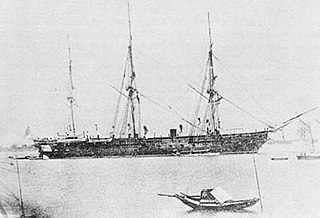
The first USS Colorado, a 3,400-long-ton (3,500 t), three-masted steam screw frigate, was launched on 19 June 1856, by the Norfolk Navy Yard. Named after the Colorado River, she was sponsored by Ms. N. S. Dornin, and commissioned on 13 March 1858, with Captain W. H. Gardner, in command. She was the fifth of the "Franklin-class" frigates, which were all named after US rivers, except for Franklin.

The third USS Chippewa was a Unadilla-class gunboat which saw service with the U.S. Navy during the American Civil War.
USS Vicksburg was a wooden steamship built in 1863 at Mystic, Connecticut; purchased by the United States Navy at New York City on 20 October 1863; converted into a gunboat; and commissioned at the New York Navy Yard on 2 December, Lieutenant Commander L. Braine in command. Vicksburg was named in honor of the great victory that General Ulysses S. Grant had recently won at Vicksburg, Mississippi.

USS Tacony was a double-ended, side-wheel steamboat acquired by the Union Navy during the third year of the American Civil War. She was outfitted as a heavy gunboat with powerful guns and used in the Union blockade of the waterways of the Confederate States of America.

USS Fort Jackson was a wooden sidewheel steamer in the United States Navy during the American Civil War. She was successful in enforcing the Union blockade of Confederate ports, capturing five ships carrying contraband. She participated in the battles for Fort Fisher, which effectively closed the port of Wilmington, North Carolina to the Confederacy. Most notably, the surrender of Confederate forces in Texas was signed aboard the ship, formally ending the Civil War in that portion of the country.
The first USS Mohican was a steam sloop-of-war in the United States Navy during the American Civil War. She was named for the Mohican tribe and was the first ship of her class.

The first USS Monticello was a wooden screw-steamer in the Union Navy during the American Civil War. She was named for the home of Thomas Jefferson. She was briefly named Star in May 1861.

The first USS Pocahontas, a screw steamer built at Medford, Massachusetts in 1852 as City of Boston, and purchased by the Navy at Boston, Massachusetts on 20 March 1855, was the first United States Navy ship to be named for Pocahontas, the Algonquian wife of Virginia colonist John Rolfe. She was originally commissioned as USS Despatch – the second U.S. Navy ship of that name – on 17 January 1856, with Lieutenant T. M. Crossan in command, and was recommissioned and renamed in 1860, seeing action in the American Civil War. As Pocahontas, one of her junior officers was Alfred Thayer Mahan, who would later achieve international fame as a military writer and theorist of naval power.
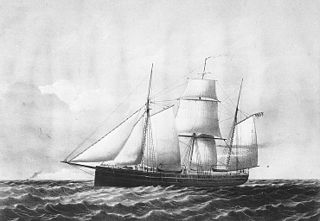
USS Niphon was a steam operated vessel acquired by the Union Navy during the American Civil War. She was used by the Navy to patrol navigable waterways of the Confederacy to prevent the South from trading with other countries.
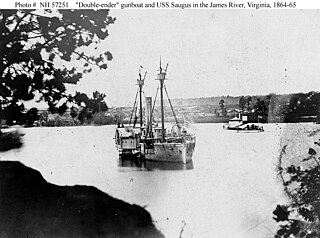
USS Mackinaw was a 974-ton sidewheel gunboat of the United States Navy which saw service during the American Civil War.

USS Unadilla was a Unadilla-class gunboat built for service with the United States Navy during the American Civil War. She was the lead ship in her class.

USS Huron was a Unadilla-class gunboat built for the United States Navy during the American Civil War for blockage duty against the ports and rivers of the Confederate States of America.

The first USS Pequot was a wooden screw gunboat of the Union Navy during the American Civil War. The ship was launched on 4 June 1863 by the Boston Navy Yard; and commissioned there on 15 January 1864, Lt. Comdr. Stephen P. Quackenbush in command. The ship was named for the Pequot Indian tribe resident in Southern Connecticut, members of the Algonquian language grouping.
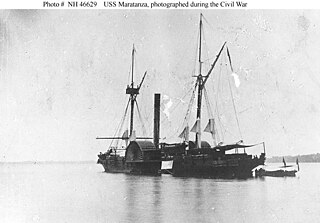
USS Maratanza was a steamer acquired by the Union Navy during the American Civil War. She was used by the Union Navy as a gunboat to patrol navigable waterways of the Confederacy to prevent the South from trading with other countries.
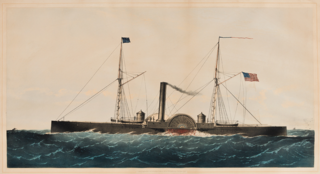
USS Osceola was a wooden, sidewheel Sassacus-class gunboat which saw combat with the Union Navy in the American Civil War. She was designed with shallow draft and double-ends specifically to allow her to operate in the narrow rivers and inlets along the Confederate coast. She was well suited to this role and took part in major battles on the James and Cape Fear Rivers.

The USS Cherokee was a 606-ton screw steam gunboat in the US Navy during the American Civil War ship. The ship later served in the Chilean Navy.
USS Lilian was a large steamer captured by the Union Navy during the American Civil War. She was used by the Navy to patrol navigable waterways of the Confederacy to prevent the South from trading with other countries.

The first USS Emma was a steamer captured by the Union Navy during the American Civil War. She was used by the Union Navy as a picket and patrol vessel on Confederate waterways.
USS Britannia was a steamer captured by the Union Navy during the American Civil War. She was used by the Union Navy as a gunboat and patrol vessel in support of the Union Navy blockade of Confederate waterways.
USS Phlox was a steamer commissioned by the Union Navy during the American Civil War. She served the Union Navy's struggle against the Confederate States of America as a gunboat; and, after the war's end, she served the midshipmen at the United States Naval Academy in Annapolis, Maryland, as a training ship.














